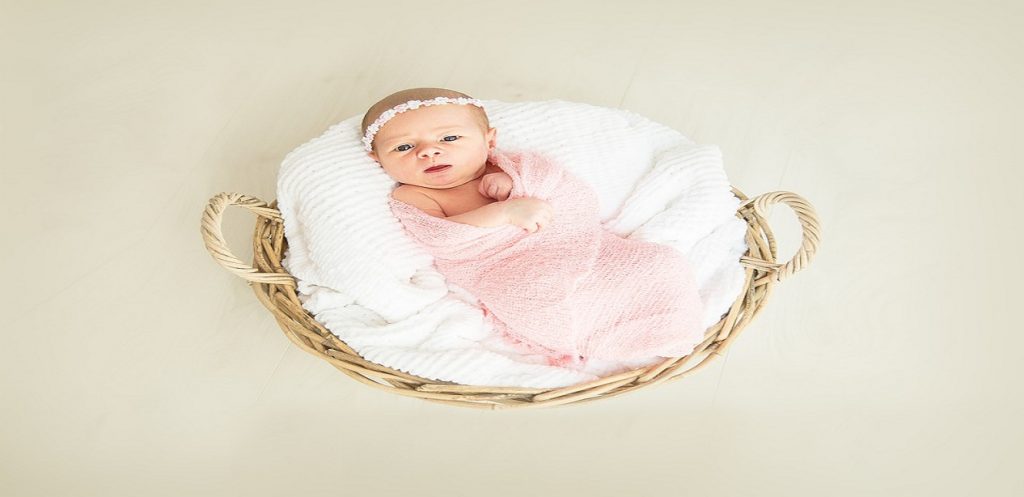Whoa! The baby is out after a long labour. Why isn’t he happy to see you? Oh, it’s not you. It’s the environment that is freaking him out. It’s all so bright and cold. Where is the warmth and darkness of the womb? Never mind. He will adapt. However, you can help him do so with little tricks that have worked for generations now. Take to swaddling.
When a baby cries, the mother tends to hold on, enveloping the baby in her arms. It works like magic. The warmth of a mother’s embrace gives the baby a sense of security. Swaddling works similarly.
Swaddling works wonders
Even though there is no match for a mother’s body warmth, swaddling nearly replicates the womb-like experience. Swaddling comfortably snugs the baby in a blanket. In the initial few days, the baby can get startled by a needle drop. Babies can exasperatingly move their hands in air and can get disturbed for no obvious reason. Swaddling plays two important roles. Firstly, it saves the baby from getting disturbed by his own reflex actions. Remember, there were none of those when he slept cuddled up in the womb. Secondly, swaddling keeps the baby warm until his own internal thermostats start functioning.
While these are some key benefits, there are some auxiliary benefits too. Swaddling even helps in reducing the temptation for bed sharing and decreases chances of rolling over.
Go slow
Some babies might not like swaddling initially and your baby will tell you about it. You can slowly get him used to it. Swaddle for shorter hours at the onset. Once he shows his consent, you can swaddle for longer. It will help him get uninterrupted peaceful sleeps.
Get it right
Currently, nearly every hospital teaches new mothers all about the art of swaddling. It is important to do it right. Figure it wrong and face days of restlessness with the baby waking up too often. Consequently, even the mother may not get peace, trying to calm the baby all the time. Besides, there are serious implications too. If you can’t even adjust two or three fingers inside the blanket, it indicates that you have wrapped him up way too tightly. This would make him extremely fussy. If the blanket is wrapped too tightly around the hips, it can lead to hip dysplasia. Hip dysplasia means damaging the soft cartilage of his hip sockets. The pressure should lie on the shoulders.
Oh, that is not to scale up your fears. There is no rocket science to this simple technique. Just pay attention to the nuances and you will be fine.
Follow it Step by Step
Getting started
Always use a thin blanket or a muslin cloth. It will keep the baby airy and comfortable. Hard clothes can leave rashes on his skin.
Use a large blanket for wrapping up the little bundle of joy
Take a square blanket and adjust it in a diamond position. Now, fold the corner to the bottom to ensure a triangle shape. The blanket should be long enough for the baby to lie peacefully and contently. Place the baby with his face up on the blanket. His shoulders should fall just a little below the folded edge of the blanket. His neck should rest against the fold.
Tuck one of his arms gently
Take his left hand and place it gently at his side. Without covering his other arm, take the side of the blanket and wrap it around his body. Tuck the blanket beneath his little body on the other side.
Make some space for the legs
Now, fold the bottom corner of the blanket upside. There should be sufficient space at the bottom of the blanket to allow the baby some leg space. It is always recommended that you use a large blanket to keep room for minor moves.
Tuck his other arm gently
Gently keep his other arm on the sides and wrap the blanket around the baby’s chest. Tuck the blanket safely beneath him.
Almost done
Don’t make your child wear too many clothes under the swaddle. He might get overheated. After swaddling, place the baby on his back only. No stomach resting.
Before you start, know when to stop
Everything comes to an end. Babies outgrow the need for swaddling before you even know it. After the initial one month, swaddling should not be done when the baby is awake as it hinders his development. During breastfeeding, it is preferable to avoid swaddling since it allows the baby to explore and learn to latch on.
Even though swaddling is an effective method of soothing the baby, the American Academy of Pediatrics recommends that you stop the practice before the baby turns two months old. This is because babies tend to learn the art of rolling over after the initial two months.
To stop the habit of swaddling, you can start taking small steps. For example, tuck one of his arms out. Then, you can experiment with taking both of his arms out.
It is about the bond you share with your child. When the baby shows symptoms of kicking off swaddling, it indicates that your child does not like being bundled up anymore. Your bundle of joy prefers to be unbundled up. Let him be.
Practice makes the parent perfect
Even if you are new and don’t understand anything, don’t despair. Having a baby is a big responsibility and you tend to mess up sometimes. Swaddling becomes easier with practice. Don’t make a fuss- it’s the baby’s job. Get started at the hospital itself. That way you will have the staff to assist you. Observe and learn. And if you still don’t get it right, buy alternative ready-made Velcro or zipper swaddles to soothe your baby down. Simply slide your baby in a snug ready-to-wear swaddle and fasten the sides.
At Mumzworld we have plenty for you to choose from.
For more useful tips on preparing for your newborn check out Top 10 Baby Shower Gifts 2017 and Our Mumz Guide for everything you need for your nursery!










Awesome post! Join the fun at https://sugongfang.com for up to R$1,000 welcome bonus, progressive jackpots, and instant PIX withdrawals. Date: 2025-10-27 20:51:05 (-03).
好文!2026年世界杯越来越近了,让我们共同期待这场全球足球盛宴。日期:2025-11-18 19:36:55 (-03)。